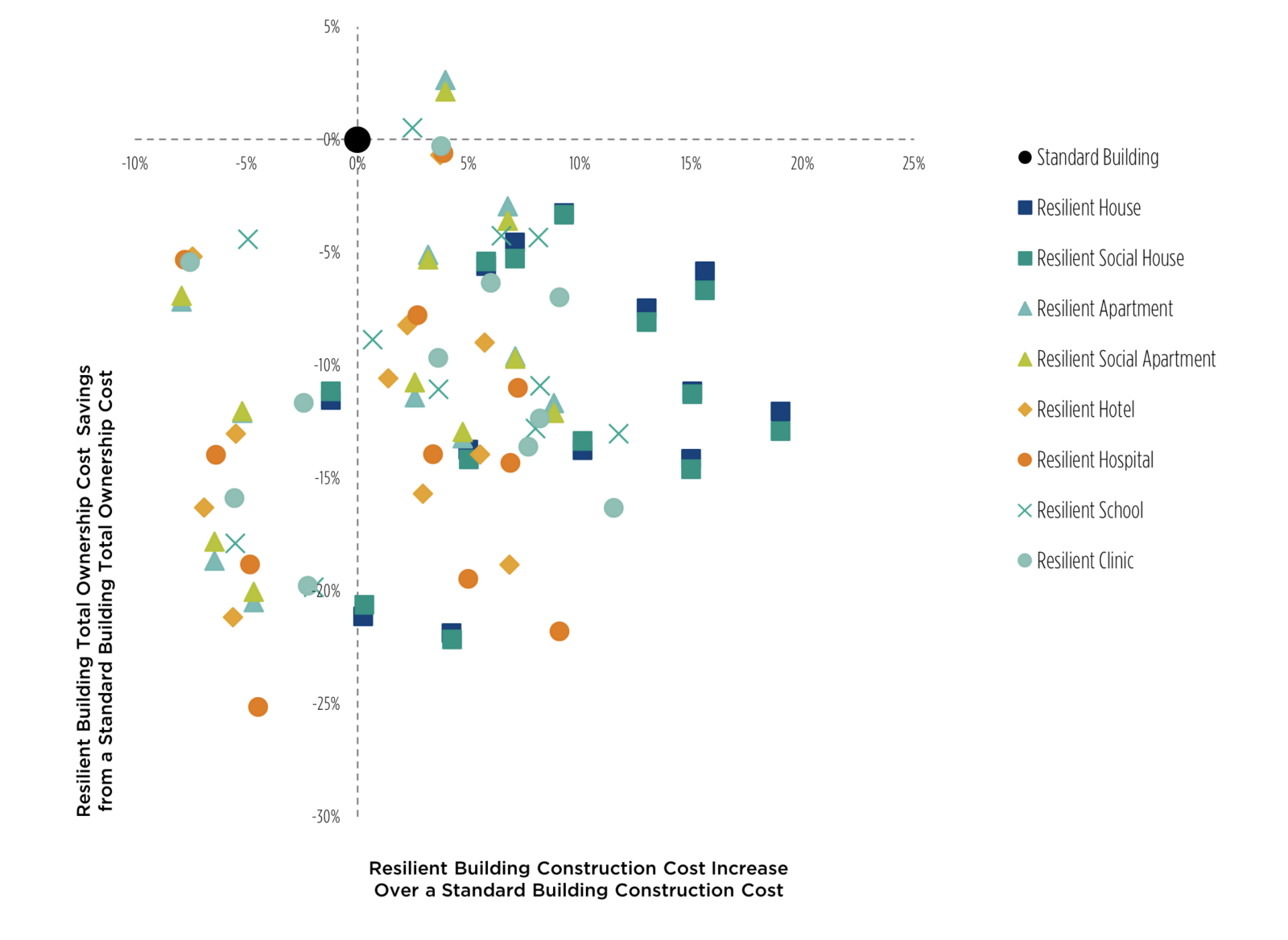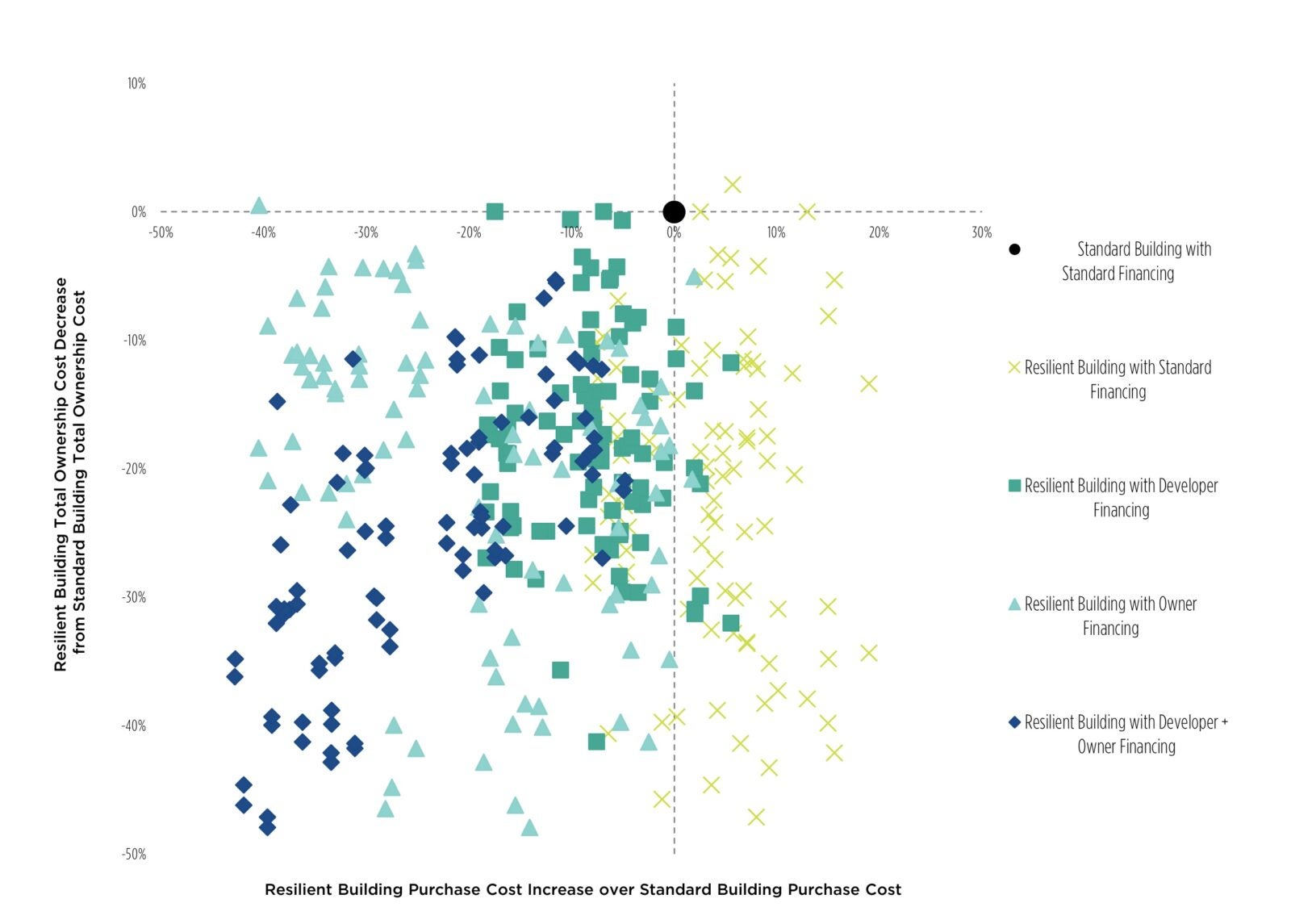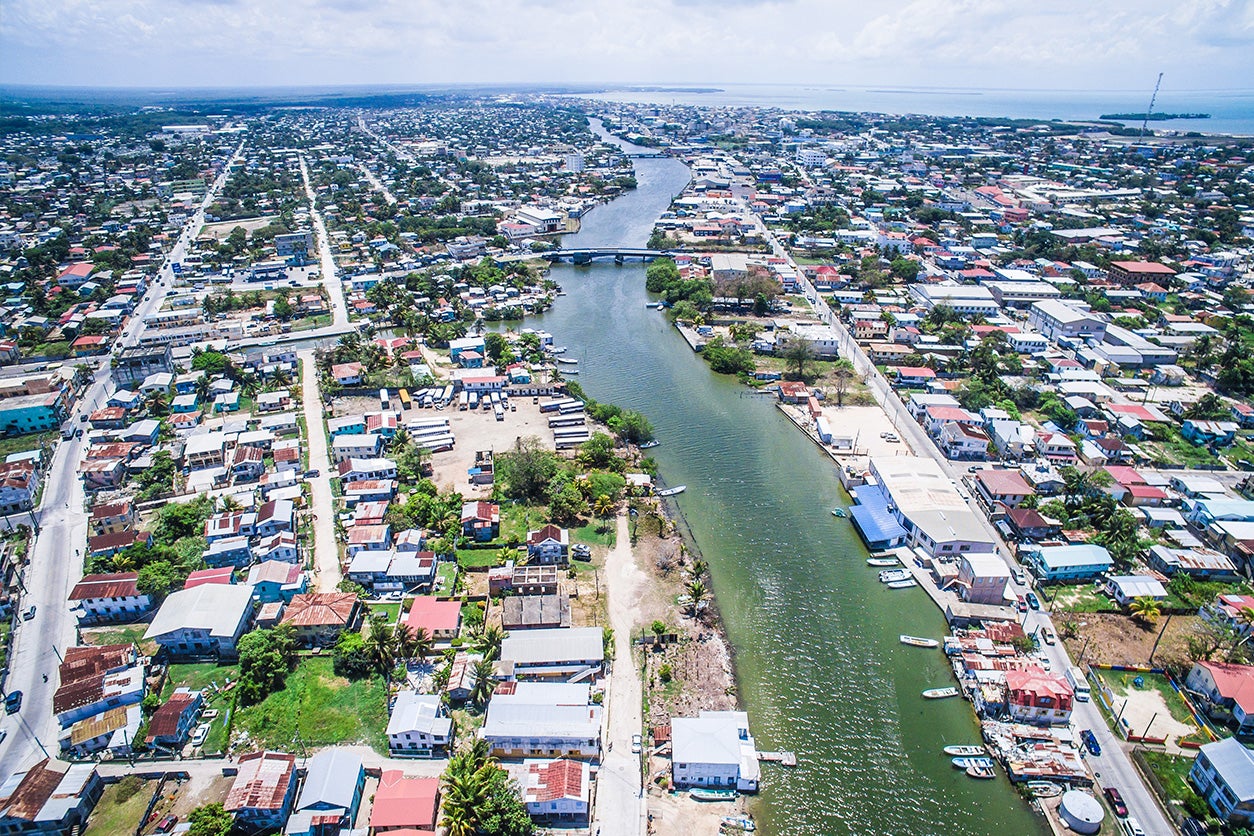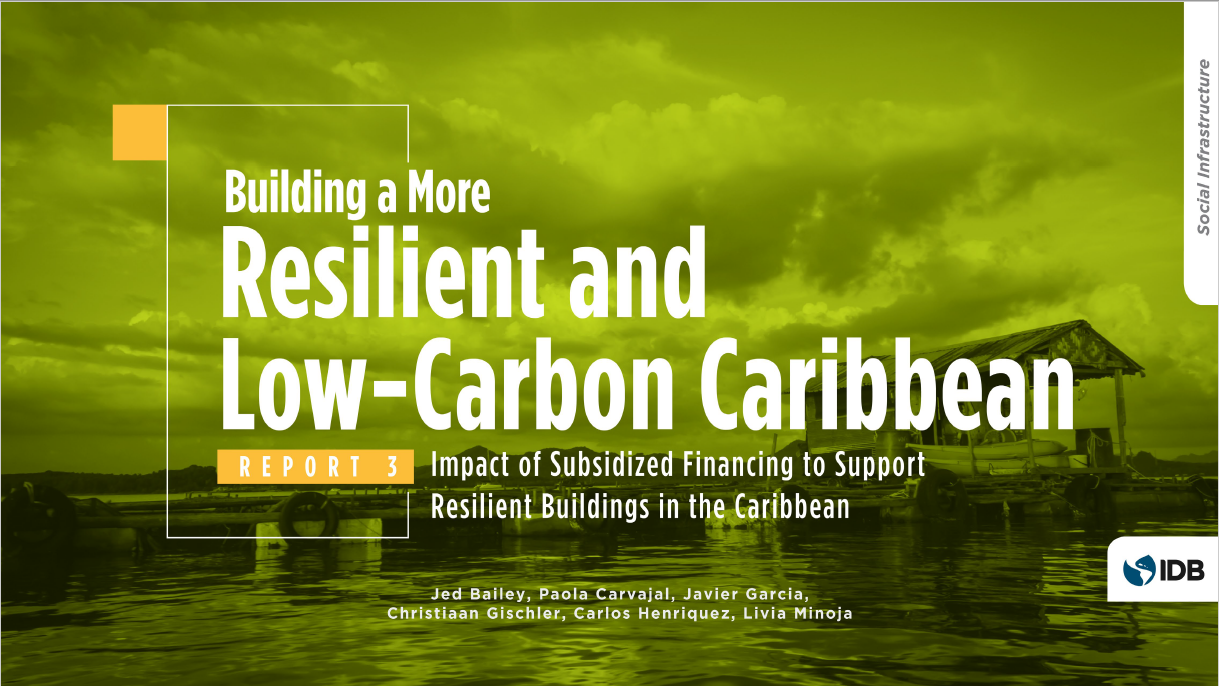The economic impact of climate events in the Caribbean is among the highest in the world. Improving the resilience of buildings is vital to increase preparedness to the impacts of climate change and is economically viable for many building typologies in high-risk Caribbean countries.
Although resilient buildings generate long-term savings, in most cases, they come with higher upfront construction costs, compared to standard infrastructure, as shown in the graphic below.

What kind of subsidized financing works best to mitigate the initial higher costs and incentivize resilient building construction?
The third publication from the “Building a More Resilient and Low Carbon Caribbean” series analyzed the benefits of subsidized financing for resilient buildings in the Caribbean, exploring how low-cost financial subsidies could reduce the initial cost for more resilient buildings and incentivize developers and building owners to invest in more resilient constructions.
The three options analyzed included financial subsidies to project developers (in the form of subsidized construction loans), to building owners (in the form of subsidized mortgages), or both, always assuming that all cost reductions from subsidizing the developer’s financing are passed on to the building owner through a lower purchase price and do not enhance the developer’s return on investment.
The report investigated the impact of these three financial subsidy options on a building’s purchase cost and total lifetime ownership cost for eight building categories (stand-alone house, stand-alone social house, apartment building, social housing apartment building, hotel, hospital, outpatient clinic, and school), six building construction archetypes (wood, enhanced wood, concrete block, enhanced concrete block, in-situ concrete, and enhanced in-situ concrete), and the two green concrete alternatives (pre-cast resin aggregate [PRA] concrete and coconut fiber concrete).
The analysis compared each combination of building category, construction archetype, and financial subsidy to a “business as usual” (BAU) case with standard construction and standard financial terms for both the project developer and the building owner.

The results show that providing subsidized finance to the project developer reduces the building purchase price below that of the BAU option for most of the analyzed resilient building options. Providing subsidized finance to the building owner would reduce the effective purchase price even further. Providing subsidized finance to both the developer and the building owner resulted in the greatest discount relative to the BAU cases, but did not provide a discount that was significantly greater than that of the subsidized owner finance alone.
This high-level result suggests that providing subsidized financing to the building owner may be the most effective way to incentivize resilient construction practices.
Would you like to know more? Download our latest publication Report 3: Impact of Subsidized Financing to Support Resilient Buildings in the Caribbean and stay tuned for the next posts!



Leave a Reply